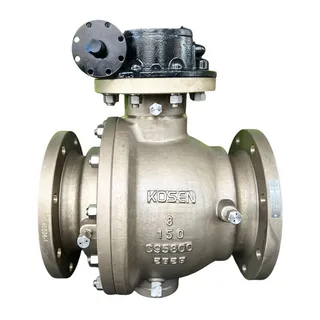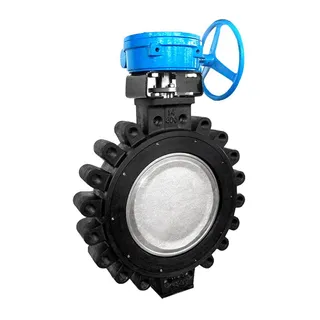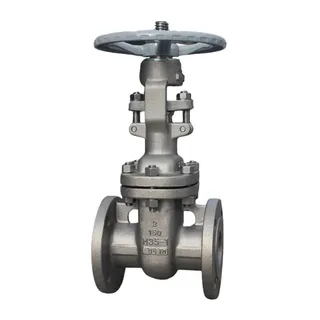In the complex networks of modern industry, valves play a crucial role, precisely controlling the direction, pressure, and flow of fluids. From petroleum refining to chemical production, from pharmaceutical processes to food processing, valves are ubiquitous. Among the many types of valves, needle valves stand out due to their unique structural design, excellent sealing performance, and high regulation accuracy, making them leaders in precision regulation. They not only meet the strict requirements for fluid control in industrial production but also maintain stable and reliable performance under various complex operating conditions. This article will deeply explore the structure, working principle, notable advantages, and wide-ranging applications of needle valves, revealing the mysteries of this important industrial component and helping you comprehensively understand the key role of needle valves in industrial automation and precise control.
A needle valve is a precision throttling valve whose core component is the needle-shaped valve core. The valve core is conical, with an extremely fine tip, like a needle, which can fit tightly into the valve seat to achieve precise control of fluid. This unique structure gives needle valves extremely high sensitivity and accuracy in flow regulation.
The working principle of a needle valve is relatively simple. When flow adjustment is needed, the handwheel or electric actuator rotates to move the valve stem up and down, thereby driving the needle-shaped valve core to move within the valve seat. The size of the gap between the valve core and the valve seat determines the flow rate of the fluid. When the valve core is fully inserted into the valve seat, the fluid is completely blocked; as the valve core is gradually withdrawn from the valve seat, the fluid flow gradually increases. This stepwise adjustment allows the needle valve to achieve any flow regulation between fully closed and fully open, meeting the demands of various complex operating conditions.
After understanding the basic structure and working principle of needle valves, it is not difficult to see that this unique design endows needle valves with many outstanding performance characteristics. These advantages make needle valves stand out among various valve types and become indispensable precision control elements in the industrial field.
Needle valves have excellent sealing performance. The seal between the valve core and valve seat relies on the tight fit of their conical surfaces. The taper of the needle is usually 1:50 or 60 degrees, and the conical surface is finely ground to ensure high contact with the sealing surface. This design allows needle valves to almost completely prevent fluid leakage in the closed state, maintaining good sealing even under high-pressure conditions. In contrast, other types of valves often cannot reach such high sealing standards, especially in high-pressure, low-flow applications, where the sealing advantage of needle valves is even more apparent.
Needle valves can withstand relatively high pressures. Due to the structural design of the valve core and valve seat, needle valves can maintain stable performance under high pressure without deformation or damage. This makes them very suitable for high-pressure pipelines carrying gas or liquid, effectively controlling high-pressure fluid flow and pressure to ensure system safety. For example, in some high-pressure steam pipelines or high-pressure gas transport systems, needle valves can precisely regulate steam or gas flow while withstanding pressures of tens of megapascals, ensuring normal system operation.
Needle valves have very high adjustment accuracy. The needle-shaped structure of the valve core allows for extremely fine adjustments when regulating flow, enabling continuous fine control from closed to fully open. This high-precision adjustment capability makes needle valves excellent in applications requiring precise flow control. For example, in laboratory chemical reactions, precise control of reagent flow is needed, and needle valves can achieve accurate control of reagent flow through minute adjustments, ensuring experiment accuracy and reliability. Additionally, in automatic combustion control systems, needle valves can precisely adjust fuel flow, ensuring stable and efficient combustion processes.
Needle valves have multiple connection methods, including internal and external threads, welding, and compression fittings. This allows needle valves to adapt to different piping systems and installation environments. In applications requiring frequent disassembly and replacement, threaded needle valves are very convenient; whereas in applications demanding extremely high sealing performance, welded needle valves can provide more reliable sealing. This diversity of connection methods allows needle valves to find suitable installation options in various industrial applications, meeting different user needs.
Needle valves are widely used across industrial production. Some common applications include:
In flame cutting, needle valves are widely used to adjust flame temperature and cutting distance. By precisely controlling oxygen and fuel gas flow, needle valves ensure flame stability and cutting quality. For example, during metal cutting, needle valves can regulate oxygen flow to control flame temperature and cutting speed, improving cutting quality and efficiency.
Instrument needle valves are an important part of instrumentation piping systems. They are mainly used to open and close pipelines, ensuring accurate measurement of fluid pressure, flow, and other parameters. For example, in pressure gauge connections, needle valves can serve as pressure gauge valves, controlling the fluid flow into the gauge to ensure accurate pressure readings. In some flow meter installations, needle valves can also act as sampling valves to collect fluid samples for flow measurement.
In automatic combustion control systems, needle valves are used to precisely regulate fuel flow. Working with combustion controllers, needle valves can adjust fuel supply in real time according to combustion needs, achieving automated control of the combustion process. This precise flow adjustment improves combustion efficiency, reduces energy waste, and lowers pollutant emissions.
Needle valves are also important in constant pressure pump speed controllers. They can adjust flow to reduce pump discharge pressure fluctuations, ensuring stable operation of constant pressure pumps. In applications requiring precise pressure control, such as hydraulic or water supply systems, needle valves can effectively regulate pump flow, maintaining stable system pressure.
In various research and experimental platforms, needle valves are widely used to control the flow and pressure of experimental fluids. With their high-precision regulation and excellent sealing, needle valves meet strict fluid control requirements. For example, in chemical experiments, needle valves can precisely control reagent flow, ensuring reaction accuracy and repeatability; in physical experiments, they can regulate gas or liquid flow to achieve precise experimental conditions.
To ensure long-term stable operation, proper maintenance is essential. Common maintenance measures include:
Inspect the sealing between the valve core and seat regularly to ensure no wear or damage. Replace the valve core or seat if damage is found to prevent leakage. Sealing effectiveness can be checked by closing the valve and observing for fluid leakage.
Maintaining cleanliness is very important. Since the gap between the valve core and seat is very small, suspended solids or impurities in the fluid may clog the gap and hinder valve operation. Regular cleaning is necessary, and filters can be installed at the inlet to reduce impurity impact.
Avoid excessive rotation of the handwheel or actuator. Over-operation can accelerate wear or even damage the valve core or seat. Flow adjustment should be done gradually, and the handwheel should not be overtightened when closing.
For threaded needle valves, regularly lubricate the threads to reduce friction, prevent damage, and extend service life. Use appropriate lubricants as recommended by the manufacturer.
The operating environment affects valve performance. Avoid high temperature, humidity, or corrosive environments, or choose valves with proper protective measures. Regularly inspect protective devices if used in harsh environments.
As a precision throttling valve, needle valves offer high sealing performance, high-pressure resistance, precise flow regulation, and multiple connection options, making them widely used in industrial fields. Whether in flame cutting, instrumentation piping systems, automatic combustion control, constant pressure pump speed controllers, research platforms, or sampling pipelines, needle valves leverage their unique advantages to meet various complex operating requirements. Proper maintenance, including sealing checks, cleanliness, careful operation, lubrication, and attention to environmental conditions, can effectively extend service life and improve efficiency.
In conclusion, needle valves are indispensable precision regulators in industrial control. With their outstanding performance and wide range of applications, they provide strong support for the safe, efficient, and stable operation of industrial production.



